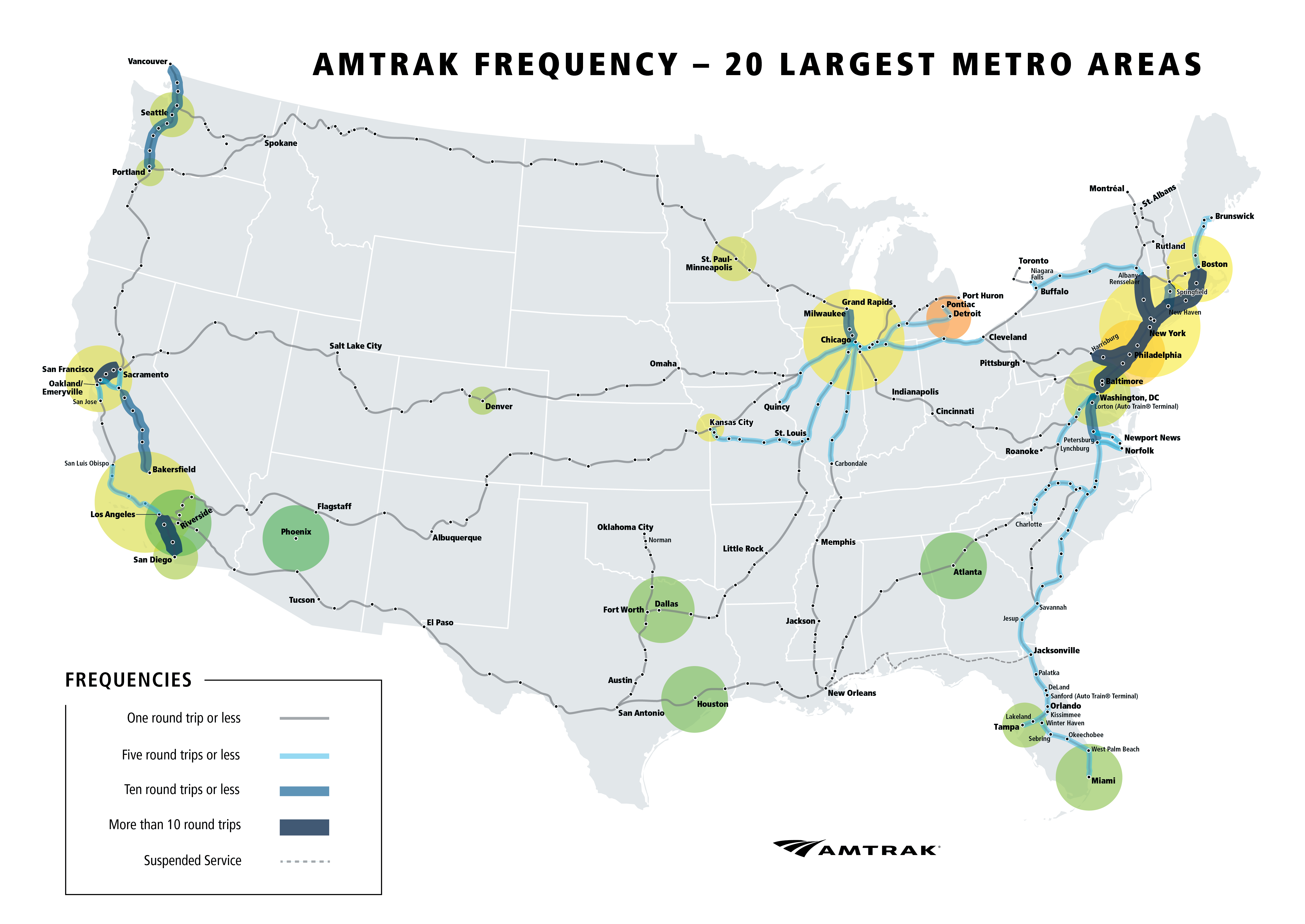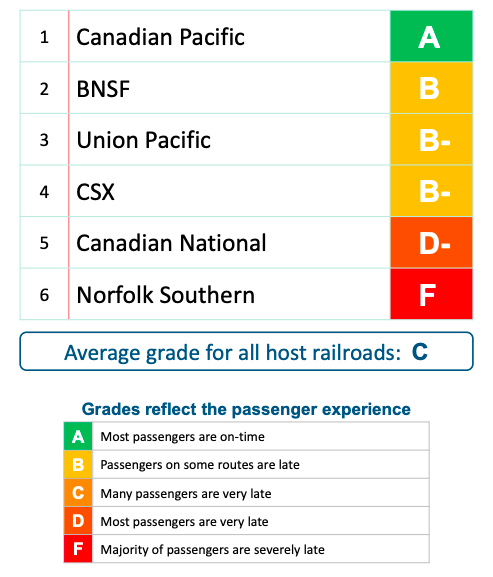Passenger Rail in 2050—With 2020 Vision
Meet Amtrak, America’s railroad.
It’s made up of a national rail system that connects 46 states and more than 500 destinations. We’ve grown in some places, but in many ways, our network has remained largely unchanged since Amtrak was created in 1971.
At nearly 50 years old, it’s a pivotal time to assess the future of intercity passenger rail and Amtrak’s network for the next 50 years.
See, a lot has changed in 50 years:
- We’ve ditched 8 track tapes for streaming;
- Traded CB radios for cell phones;
- And swapped bell bottoms for skinny jeans.
The world has changed a lot. Shouldn’t our rail service?
We sure think so, and with an estimated 100 million more people living in the U.S. by 2050, we must get started quickly. If you think congestion on our nation’s highways and long waits at the airport are a problem today, well…you get the picture.
Amtrak and intercity passenger rail can help improve travel all across America, but it will require us to rethink how we serve our national network.

Demand for intercity rail travel has never been higher: More than 30 million riders have chosen Amtrak for the last seven years straight, and our ticket revenue is at all-time record levels. Most of this growth comes from shorter-distance travel between cities—what we call “corridor service”—where the speed, convenience, reliability and comfort of rail travel makes Amtrak competitive with other options.
In fact, nearly 83% of riders use our services to travel under 250 miles. We see a huge opportunity to better serve the corridors that already exist along today’s long distance routes with trains that are:
- More conveniently-timed;
- More frequent;
- And overall faster.

How can Amtrak continue its successful trajectory of growth?
We need to add services in the regions, cities and towns across the nation where other transportation options are constrained and we can provide a competitive service. Today, Amtrak may only stop in your city or town once a day and maybe in the middle of night. Or, perhaps you are one of the millions of Americans that lives in a major city where Amtrak service doesn’t exist at all?
In 2020, Congress is scheduled to develop and vote on Amtrak’s reauthorization, which will establish the Federal policies, funding recommendations and other aspects of what Amtrak does for the nation. These decisions will guide the United States’ investment in intercity passenger rail for decades to come.
That’s why we are busy working on our vision for the future, so we can let Congress know how we think Amtrak can do even more for America.




